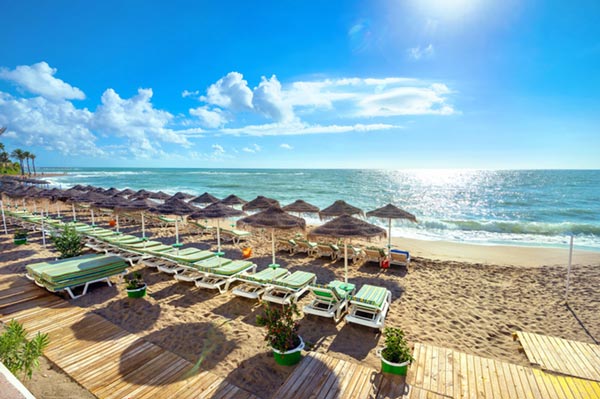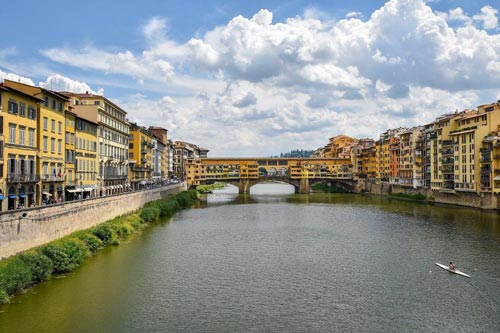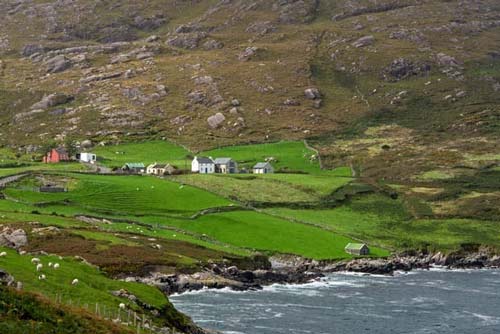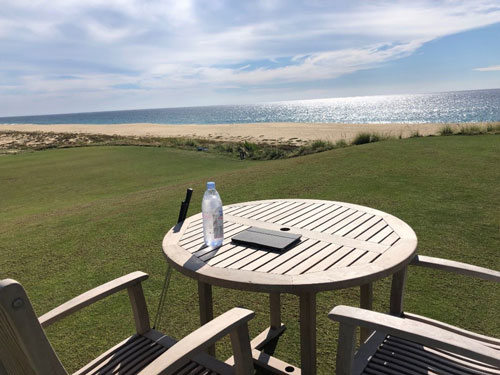Our next real estate scouting trip is a go…Mission Spain.
My scouts Eoin Bassett and Paul O’Sullivan packed their bags, booked their flights and they put boots on the ground.
Spain has a lot to recommend it in terms of the potential for real estate plays, both investment and lifestyle.
So why Spain makes sense for international real estate investing? Read on…
From Crisis to Opportunity
I’ve been watching Spain for a long time, and I’ve seen it go from a place of deep crisis to one where I see some true opportunities for savvy investors in the right places.
Spain’s problems started in mid-2007 as the global crisis rolled out. Spain was hit hard. The banks and the government were broke. They, like their people, had relied on credit and were struggling under a huge debt burden.
By 2013, unemployment rates were in excess of 26%, a record high. Youth unemployment was north of 50%. Around 1.8 million of the jobs lost were in construction. Throughout the country, unfinished developments stood as concrete reminders of just how far Spain had fallen.
With record unemployment, hardly anyone could afford to buy a home. Yet the country had a massive oversupply. At one point, estimates put Spain’s excess supply of homes between 1 and 2 million.
Back then I dug deep into Spain’s real estate market to find and identify destinations where we could profit. But for various reasons, most didn’t add up.
That was 2008. For four years I watched and waited, keeping tabs on what I knew would develop into incredible deals.
I expected that opportunity would come. We just had to bide our time for the trigger event that would get the market moving again. That event happened in 2012.
That was the year the Spanish government approved the setting up of a so-called “bad bank”—SAREB—with the aim of stabilizing the market. SAREB would hold all the “bad” real estate from developers who had gotten into difficulty and individual owners who couldn’t make their mortgage payments. SAREB held its first bank fire-sales in summer 2013…and we were off to the races.
Since 2013, we’ve done well snapping up the best crisis deals.
To find opportunity, I looked to an internationalized part of Spain: one of Europe’s most popular sun coasts, the Costa del Sol.
The Costa del Sol: Spain’s Sunny Coast
The Costa del Sol is beautiful, almost endlessly sunny…and one of Europe’s top tourist destinations.
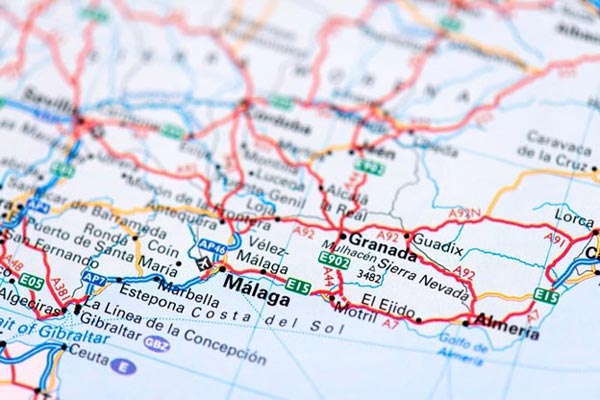
This strip of stunning coast has all the ingredients of a successful internationalized place. The weather is amazing: it has 320 sunny days each year. The beaches are stunning and it has appeal for a broad cross-section of people…you have historic towns and cities, incredible locally produced food, world-class golf courses and marinas, shopping and entertainment.
Crucially, it’s easy to get there. In 2004 Malaga airport saw over 12 million passengers. In 2018 it was more than 19 million. Post pandemic in the age of the Zoom Boom, numbers are set to surge again as millions can now work from anywhere.
The Costa del Sol is a short hop from almost anywhere in Europe. You’re looking at a flight time of typically one to three hours. (Which also makes it good as your European base.)
Go back 70 years or so and the Costa del Sol was a hard-to-reach playground for the international jet-set. It could take days to get there. Things really began when a Spanish-born prince of German origins bought land and created the famous Marbella Club in 1954. A guy named Alfonso of Hohenlohe-Langenburg.
European aristocrats were joined by Hollywood royalty…Grace Kelly, Ava Gardner, Marlon Brando, Orson Welles, Brigitte Bardo, Frank Sinatra. Audrey Hepburn lived full time in a private villa in the Marbella Club.
In 1964 the runway at Malaga airport was extended to accommodate wide-bodied jets and there was an explosion of tourism with new hotels and resorts opening. Northern Europeans, mainly British and Scandinavians, poured onto the Costa del Sol.
This steady stream of tourists helped keep the Costa del Sol insulated from the worst economic ravages of the 2007 global crisis.
Even at the height of the crisis, tourists were still coming. Between 2007 and 2013, international tourist numbers to Andalucía, where the Costa del Sol is, ranged between 7 million and 8 million each year. (There has been an inevitable drop in numbers during the pandemic, but I predict the trend of “revenge travel” will see Northern Europeans pouring back into the Costa del Sol in the coming years to make up for all those sun vacations they missed out on.)
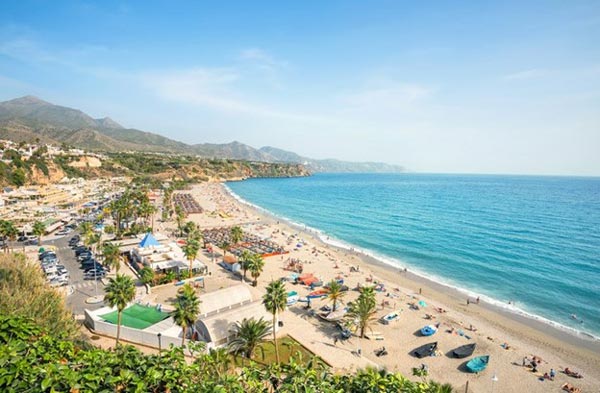
As I always say, internationalized places like this are resilient. Places like Mexico’s Riviera Maya, Portugal’s Algarve, and the Costa del Sol, are bouncing back faster and harder from the pandemic travel restrictions. These are inherently desirable destinations, places people want to be in good times and bad. Places to escape for vacation or to just escape full stop.
This is the appeal of the communities along this stretch of Mediterranean coast that have drawn vacationers and retirees from northern Europe for decades…and are now set to become hubs for the remote working set as well. Real estate trends are working in our favor to capitalize on this opportunity.
I mentioned how vital Malaga airport is to the potential for opportunities on the Costa del Sol, but the city itself deserves a mention.
Malaga: Spain’s “New Barcelona”
Once a gritty port city, Malaga is now billed as the “new Barcelona.”
Its international airport is the arrival point for the millions of tourists who visit the Costa del Sol and farther afield in the south of Spain…Granada, Seville, Cordoba…
Malaga’s port area has undergone a huge gentrification over the last decade. Before that time, this was a place even locals avoided. Now, it’s a place to get a fabulous dinner in a hip eatery…or to shop in a little boutique store. And Malaga overall, is one of Europe’s most popular city break destinations. The port is only one tourist favorite in Malaga. They also spend a lot of time in the “old town”…shopping, dropping into museums, picking up an ice-cream, or just doing some general sightseeing.
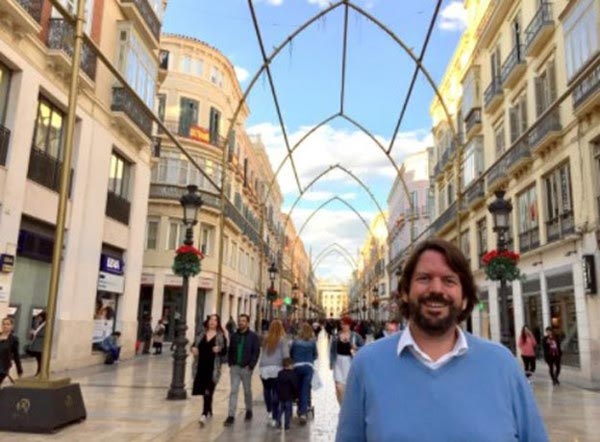
I first recommended Malaga back in 2015. We could buy at crisis prices because Spain was still mired in the last great crisis. Yet, Malaga’s tourism growth was on a tear. That tourism tear really matters because the play here was to buy close to or in the old town and rent to folks coming for a city break.
Back then we could buy a small condo direct from a bank fire-sale for $100,000 and plug it straight into the red hot, almost year-round, rental market. These opportunities have all but dried up as Malaga’s market went on a tear.
I am as bullish as I have ever been about the rental side of the equation. Once travel is fully back, Malaga will immediately bounce back. But, most of the bank fire-sales have been absorbed. The buying opportunities are thinner on the ground. That said—who knows what Mission Spain could turn up once my guys put boots on the ground.
When looking at Spain for real estate investment, my focus has been on the Costa del Sol. But, when it comes to a pure lifestyle angle, the cities of Spain have so much to offer…and are some of the most vibrant spots in Europe.
Balmy summer evenings spent eating tapas and drinking local wines surrounded by centuries of history…exploring Moorish castles and walking in the footsteps of sultans…discovering the artwork of the world’s most famous painters and artists who were inspired by the atmosphere, light, and color of these cities. There is so much to explore and experience if you live in, or near, one of Spain’s cities.
Cadiz: A College Town with Rental Potential
For authentic, laidback charm, Cadiz is hard to beat. Located on a spit of land in the Bay of Cadiz, the sea-level city occupies just 401 square miles making it a walkable, accessible place—which appeals to tourists, retired expats, and digital nomads, most of which don’t tend to come with cars.
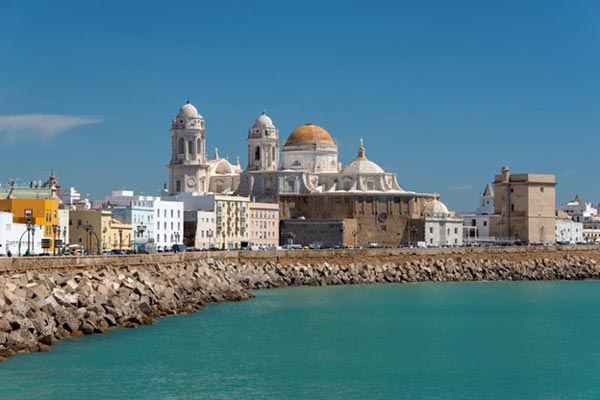
Another by-product of its small size is a tight rental market, exacerbated by seasonal demand from university students. This means that, with the right property here you could see rentals short-term from tourists or longer term from expats, work-from-home professionals, or even students if you wish—a tight rental market means you get to choose.
One thing to be aware of in Cadiz and some other parts of Spain is that in order to rent a home for tourist purposes, you need a special licence.
However, this doesn’t apply if the home is rented for more than two months—making that work-from-anywhere Zoom Boom crowd an even more attractive prospect in the Spanish market.
Seville: Modern Moorish Spain
Farther inland, Seville is about 50 miles from the Atlantic Ocean. It sits on the Guadalquivir River, the largest navigable river in Spain.
The city is justly famous for its Moorish architecture, bull fighting, flamenco dancing, and lively culinary scene. (It bills itself as the world capital for tapas.) Seville’s Holy Week processions are widely considered the most solemn and impressive in Spain, drawing millions of visitors each year.
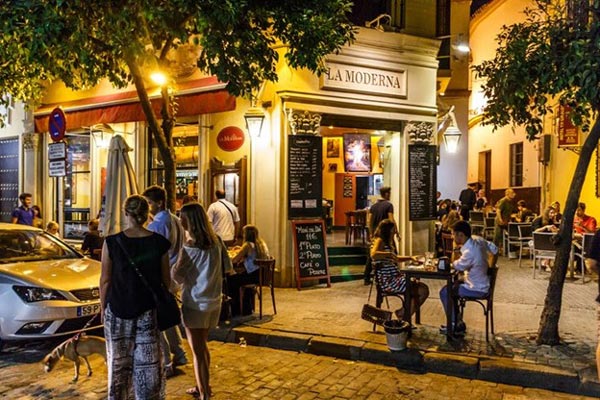
Tourism is a major industry. Along with Córdoba and Granada, Seville forms part of the “Moorish Triangle:” the three cities that best showcase Spain’s long Moorish history.
When you stroll through the Patio de los Naranjos—the Patio of the Orange Trees—next to Seville’s massive Gothic cathedral…or climb the Giralda Tower—whose ramped floor to the top could accommodate riders on horseback—you can feel as though you’ve stepped back into Spain’s Moorish past. But, in fact, few of Seville’s buildings are genuinely Moorish…. Rather, the locals liked the architectural style so much that they continued to imitate it for centuries after the Moors left in 1248.
Although steeped in history, Seville has all the buzz of a vibrant, modern city…there are plenty of spots to savor the local tapas with friends or see out the day and people watch with a cool drink on one of the city’s many plazas.
A rental play in Seville could be a way to go as well, with places in the center of the city like this charming studio with an existing tourist license listing for just €130,000. It’s beside the city’s famous Plaza de la Alameda de Hércules, the oldest public garden in Spain dating from 1574, and walking distance from Seville’s other attractions. It’s not big, but could be just what visiting tourists are looking for on Airbnb. Looking at short-term rental rates it looks like—with the right marketing and management—a gross rental yield of 6% could be achieved. Nice way to have your Spanish pad pay for itself.
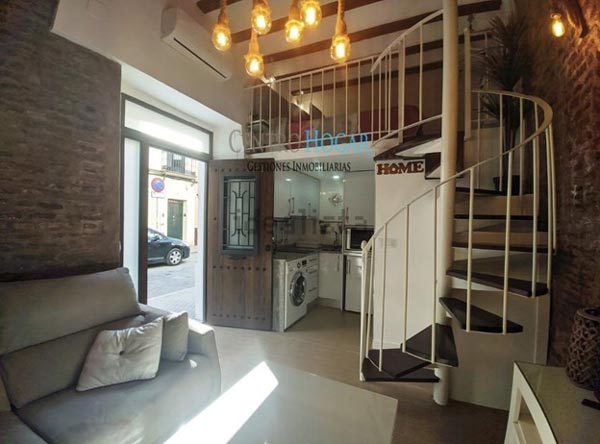
Granada: Authentic and Steeped in History
Bright blooming flowers line the streets and crawl up historic buildings. Cured meats hang from the ceilings of tavernas. The snow-covered Sierra Nevada mountains tower above and glint in the sunshine. This is historic Spain. This is Granada.
The beautiful and glamorous are all around. Some rest skis on their shoulder. Others sip cava in the sunshine, head stuck in a book. Others take in the historic sights on walking tours. There are Spaniards…and some northern Europeans. Many come from Madrid for a weekend retreat. It’s very different to the Costa del Sol where British and Germans come to drink the same beer they do at home and eat the same food. Granada is authentic Spain.
Home to three UNESCO World Heritage Sites (the Alhambra, Generalife, and Albayzin), Granada is steeped in history and attracts visitors from across the world. Its international airport has flights from most major European cities, and it’s within a two-hour flight range of Northern Europe’s major population centers.
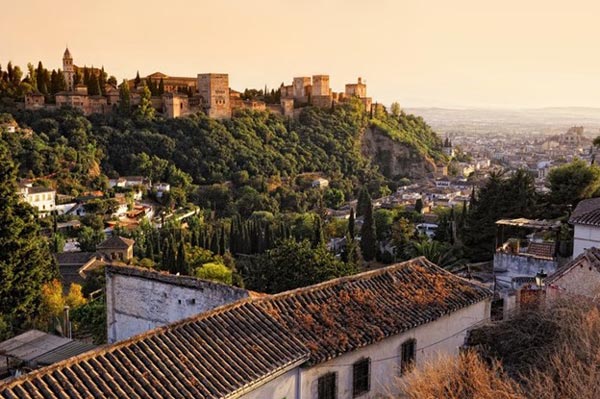
Culture, beaches, world-class golf and other outdoor activities are easily accessible. This area appeals to weekend-break visitors, golfers, history buffs, and even as a wedding destination.
Domestic visitors and North Americans come in large numbers. And, of course, it’s a beautiful place to retire.
One fascinating feature here, which my scouts will dig into for sure, are the cave houses.
There are parts of Granada where living in a cave cut into the stone is common practice. In particular the Albaycin and Sacromonte areas, which form part of a UNESCO World Heritage Site along with the Alhambra, are known for their cave homes.
It’s an unusual style of living for sure, but far from the damp darkness you might imagine. In fact, many cave homes are large, well-lit places with many bedrooms. Plus, being cut into the stone makes them easy to heat in winter and cool in summer.
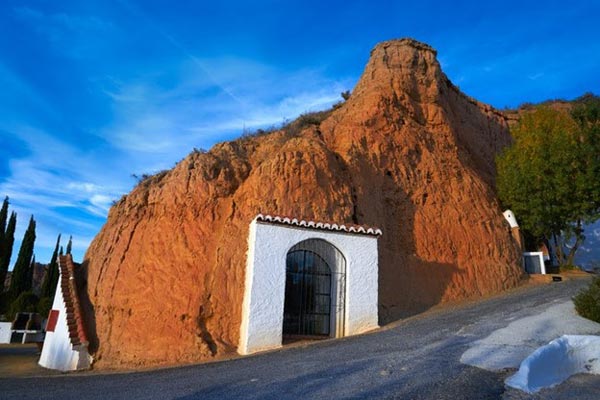
I’ve been following the market in Granada for years.
In June 2009, I recommended a distressed deal in the city. Due to the European economic crisis, the bank had stepped in to take the condos from the developer, discounting the units by 36%.
That meant members of my Real Estate Trend Alert group could buy from €85,000 ($118,000 at the exchange rate at the time) to €169,000 ($235,000 at the time) depending on unit size. Unit sizes ranged from 538 square feet to 1,114 square-feet. There were high-end onsite facilities include four swimming pools, a spa, gymnasium, saunas and gardens. Condos came with fully fitted kitchens including appliances, air conditioning and heating, garage and alarm.
Additionally, the bank offered finance to RETA members of up to 90% finance on these units with rates as low as 2.5% (a variable rate tied to European Interbank rates) and a term of up to 40 years.
My scout Paul O’Sullivan will be putting boots on the ground in Granada as part of Mission Spain, and he will make a point of checking in on this recommendation to see how it played out.
Paul is set to head east from the Costa del Sol, while Eoin Bassett is keen to head inland into the mountains of Cadiz province and check out the White Villages, before exploring the Costa de la Luz in the southwest.
I’m excited to see what they uncover!
Note: Stay up to date, in real time, on what Eoin and Paul discover during Mission Spain, and get Ronan’s international real estate insights, in International Living’s Dream Home Letter. To receive this daily e-letter from Ronan, packed full of info on cheap dream homes, markets to watch, how-to guidance and much more, you just need to take out a subscription to International Living Magazine…and the Dream Home Letter comes free as part of your subscription! All the details are here.
